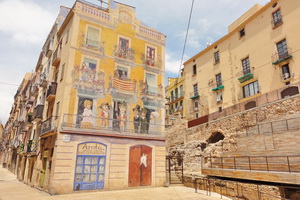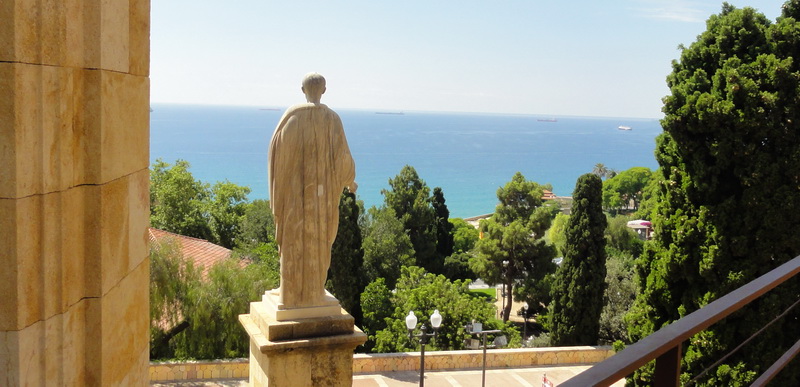
Everything you need to know for 2 or 3 days in Tarragona, Reus and nearby
Tarragona is an often-overlooked gem right on Spain’s Costa Dorada, with splendid Roman remains in every nook and cranny. Founded by the Romans in the 3rd century BC, ‘Tarraco’ became the capital of the Roman province of Hispania Citerior. Today, you can follow the footsteps of ancient Romans, and visit the ruins of their amphitheatres, aqueducts, and city walls scattered everywhere around the city.
The Roman Amphitheatre, with its breathtaking setting right beside the sparkling, azure Mediterranean Sea, once hosted gladiator battles and other public spectacles.
Meanwhile, the Roman Circus, where chariot races thrilled crowds, the Temple district and the Forum have, since medieval times, become integrated and enveloped in the old town.
Roman ruins aside, Tarragona offers a marvellous, low-key alternative to Barcelona – away from the crowds. The city’s blend of ancient history and Mediterranean charm makes it a unique spot to soak in the sun and soak up the culture (and perhaps a drop or two of the local Vermouth).
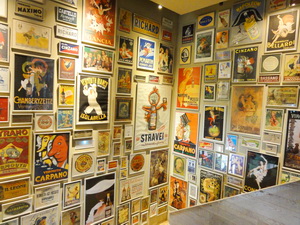
The city is also famous as Spain’s principal maker of Vermouth and no visit is complete without sampling the local produce but be careful, it packs a punch! A lively town, with bustling cafes and squares that are perfect for relaxing in, Reus is a chance to experience an authentic Catalan city without the tourist crowds.
For a true ‘off-the-beaten-track experience head inland to medieval Montblanc and the Cistercian Monasteries of Poblet and Sant Creus. If you’re heading on to Priorat go via the Sierra de Prades for a spectacular scenic route!
Table of Contents
Tarragona, Reus and Alt Camp Highlights –
8 things to see and do in Tarragona and nearby
- Roman Tarragona – do not miss!
- Tarragona Cathedral
- Museu Nacional Arquelogic de Tarragona MNAT
- Balcony of the Mediterranean
- Pont del Diable
- Platja del Miracle
- Platja Arrabassada
- Cala Fonda
Things to See and Do in Reus
- Ruta del Modernisme,
- Gaudi Museum
- Casa Navas
- Pere Mata
- Passeig de la Boca de la Mina
- Estació Enologica
Things to See and Do in Alt Camp
Practicalities – Frequently asked questions about things to see and do in Tarragona
Things to see and do in Tarragona City and nearby
Roman Tarragona
Discover Spain’s best Roman remains
Tarragona’s outstanding, World Heritage, Roman remains are possibly the best in Spain and among the best in Europe.
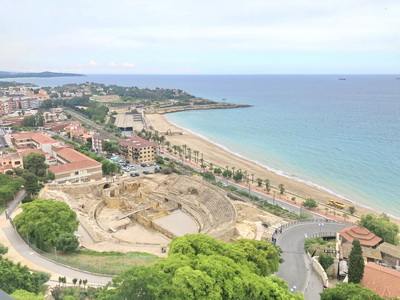
With the passing of the centuries, Tarragona’s other Roman ruins – which are very substantial – have become intriguingly woven into the fabric of the city. The Cathedral now sits where the Temple of Augustus once stood, the medieval old town occupies the Forum and the Plaça del Font sits at the centre of the Circus. Even so, many parts remain, having been put to other uses over the centuries or uncovered by the archaeologists, and as you wander round the modern city ancient Tarraco reveals itself piece by piece.
Tarragona Cathedral

Featuring Catalonia’s largest rose window and a beautiful portico with fine statuary the grandeur of the Cathedral makes a wonderful counterpoint to the medieval old town and the Roman walls which surround it There’s also a museum displaying religious art and artifacts, including a remarkable gold and silver monstrance from the 14th century.
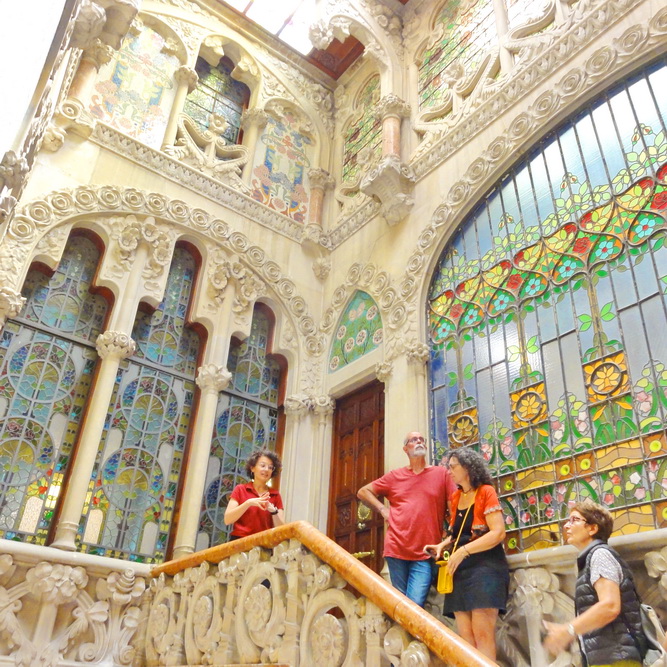
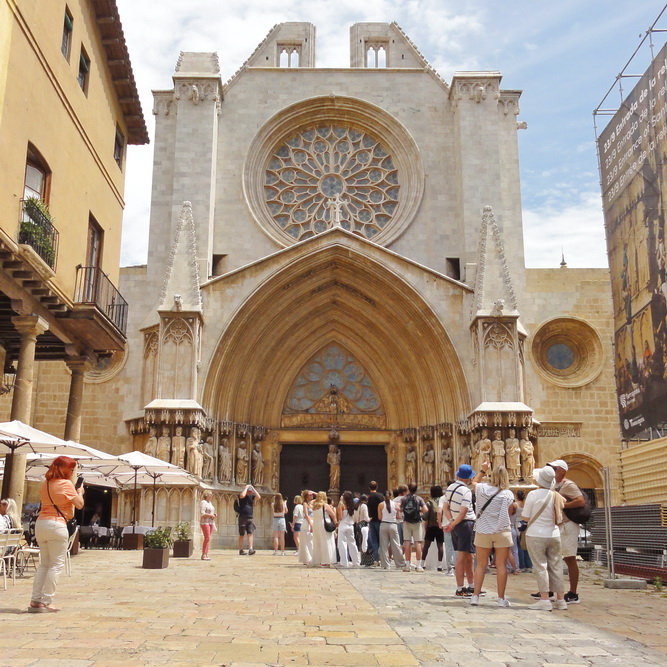
Museu Nacional Arquelogic de Tarragona MNAT
As may be expected Tarragona’s archaeological museum hosts a truly impressive collection and is houses in a beautiful building. At the time of writing the main
museum is under restauration (see exhibits at Tinglado 4 a coverted railway station) but
should be open in early 2025.
https://www.mnat.cat/en/
Balcony of the Mediterranean
Stunning sea views!
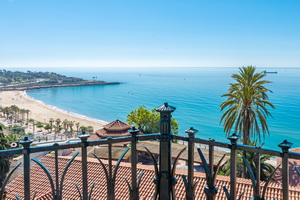
Passeig de les Palmeres offering stunning sea views – no visit to the
city would be complete without a visit!
Running from the busy Plaça Imperial Tàrraco, the city’s main traffic hub, to the “Balcó del Mediterrani” the Rambla Nova is the city’s main shopping street.
Pont del Diable
The devil’s bridge
If you haven’t had your fill of Roman remains the Ponte de Diable (Ferreres Aqueduct), just a short drive from the city centre, is a marvel of Roman engineering that’s well worth a visit.
Platja del Miracle
The city’s main beach
Tarragona city beach sits a stone’s throw from the city centre just below the amphitheatre and, though not perhaps the most paradisical swathe of sand on the Costa Dorada, is fine for a swim, a sunbathe and a rest from the ‘old stones’.
Platja Arrabassada
Just 2km north of the amphitheatre is a lovely, sandy beach and though still within the city bounds doesn’t feel so urban (and doesn’t get so busy in the season).
Cala Fonda
The Catalan ‘Waikiki’
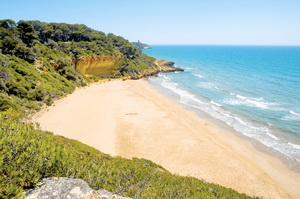
Things to See and Do in Reus
Reus – Ruta del Modernisme
Origins of Catalan Modernisme in Gaudi’s birthplace
As Gaudi’s place of birth, Modernist architecture is the USP of Reus and there are several excellent examples dotted around the city centre making for a wonderful treasure hunt.
The Gaudí Centre in the main square is a good place to start and offers an interactive look into the life and work of this genius – the perfect spot to dive into his early influences.
The centre also offers guided walking tours (or DIY maps) of the ‘Ruta del Modernisme’, a fantastic way to discover the town’s architectural gems, including Casa Navàs and Casa Rull, both by Lluís Domènech i Montaner are prime examples – with their stunning facades, colourful mosaics, and intricate ironwork – but there are many buildings on the route, each with its own fascinating history.
On the outskirts of the city Institut Pere Mata, also by Lluís Domènech i Montaner, is spectacular and well worth a visit. The complex was built to provide a therapeutic and humane environment for mental health patients and offers an insight into the social and political implications of the Modernist movement.
Gaudi Museum
The master architect’s life and influences
This modern visitor centre offers a unique look into the life and work of the world-famous architect. The museum not only gives a fascinating insight into Gaudí’s life story but also his inspiration and way of thinking. Interactive exhibits on the third floor offer a close-up view of his emblematic works like the chimneys of La Pedrera, the structure of the Sagrada Familia and the starry dome of Palau Guell.
The ground floor reception has a nice souvenir shop selling tickets, maps and guided tours for the Ruta de Modernisme (see ‘Highlights).
Casa Navas
A masterpiece of craftsmanship and style
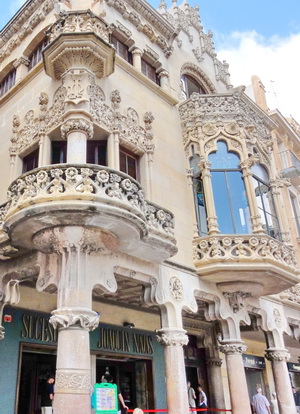
The ornate façade, with elaborate windows, intricate stone carvings and delicate stained glass, is quite something but the interior, perfectly preserved, is truly fantastic with its stunning mosaic floors, hand-carved woodwork, and a cacophony of decorative details that reflect the height of Modernist design.
Part of the building was damaged by a bomb during the Spanish Civil War, and its grand tower was lost (leading us to ponder how many other fine buildings were destroyed). Despite this, the house remains a breathtaking example of early 20th-century architecture, and a guided tour is highly recommended to get the most out of your visit.
Pere Mata
The “Pavilion of the Distinguished”
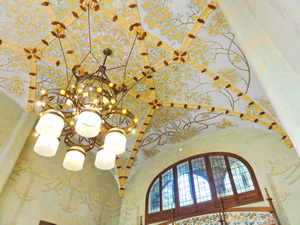
The “Pavilion of the Distinguished” is open to the public and feels more like a luxury villa than a hospital. Here again perfect harmony of artistic style and functionality with vibrant stained glass, intricate mosaics, and richly decorated interiors.
On the outskirts of the city, in its own grounds, the Pere Mata is a peaceful sanctuary, and even enjoys distant sea views from the upper windows Built for wealthy patients the hospital is nonetheless an insight into the ‘social project’ of the Modernist architects and their patrons.
Passeig de la Boca de la Mina
Tree-lined walkway
If you’re feeling energetic the Passeig de la Boca de la Mina is a tree-lined walkway which leads from the city centre (behind the train station out to the Pere Mata Institut (2km each-way).
The path is more or less flat, ideal for a leisurely stroll, and has great cultural significance for the people of Reus. It was originally used as a route to transport water from the nearby Mina Spring (hence ‘Boca de la Mina’) into Reus, giving it both practical and cultural significance.
Lined with trees and dotted with benches, along the way you’ll find sculptures, gardens, and informational panels that share stories about its past. At the end of the walk, don’t miss the beautiful Pere Mata Institut (see above).
Estación Enológica
Where modernisme, wine and vermouth combine…
Modernisme, wine and vermouth, all under one roof – this is perhaps one of the best places to understand the essence of Reus and the region as a whole.
The beautiful architecture gives an insight into how the Catalan Modernist movement endeavoured to combine form with function, which you’ll see echoed in the ‘Cathedrals of Wine’ bodegas throughout the province and which is still evident in the Catalan way of thinking to this day.
This building was designed as a college and research centre to understand and develop the local wine culture and educate the winemakers and every detail has been designed to marry with stye and practicality. The laboratory in particular is a beautiful example of functional beauty.
The building can be visited for free – vermouth tasting is 3€ per person
Things to See and Do in Alt Camp
Montblanc
A medieval gem
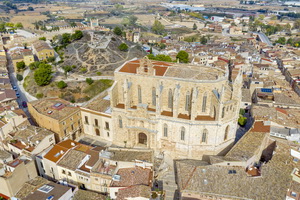
Valls
Casteller tradition
Though not as well preserved as Montblanc Valls does have a nice old town. The main attraction here is the strong ‘Casteller’ tradition, human towers of great difficulty – check to see if there’s an event or for more details on this fascinating cultural activity visit the town’s Casteller Museum.
Reial Monastir de Santa María de Poblet
Star of the Cistercian Route
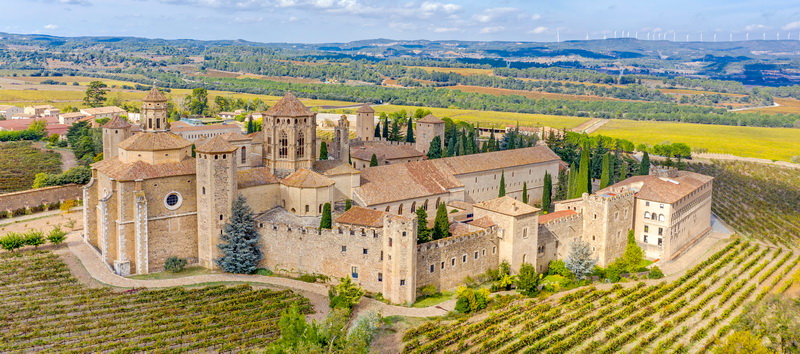
Be sure to take a guided tour!
https://www.catalunya.com/en/continguts/patrimoni-cultural/royal-monastery-of-santa-maria-de-poblet-17-16003-354
See also http://www.catvisit.com/en/the-cistercian-route/
Museu Municipal d’ Alcover
Worth a stop if you’re heading inland for the Monasteries (and the scenery) the Museu Municipal d’ Alcover Is a wonderful collection of Triassic fossils housed in Ca Batistó, a beautifully preserved 19th century bourgeois home.
Frequently Asked Questions about Things to See and Do in Tarragona and nearby
How to get to Tarragona?
Tarragona and South Catalonia is extremely well served with flights from the UK with flights from most UK airports to Reus (Costa Dorada / Tarragona) and Barcelona.
This circular trip can be adapted to suit any of those airports as a start point.
See your options in the table below:
| English airports | Reus connections | Barcelona connections |
| London Gatwick | TUI | Easyjet, Vueling |
| London Stansted | Jet2, Ryanair | Ryanair |
| London Heathrow | B.A., Vueling | |
| London Luton | Easyjet | Easyjet, Ryanair |
| London City | B.A. | |
| London Southend | Ryanair, Easyjet | |
| Manchester | Easyjet, Jet2, TUI, Ryanair | Easyjet, Jet2, Ryanair, Vueling |
| Birmingham | Jet2, TUI, Ryanair | Jet2, Vueling, Ryanair |
| Bristol | Jet2, TUI | Easyjet, Ryanair |
| Newcastle | Jet2, TUI | Ryanair |
| Leeds Bradford | Jet2, Ryanair | Jet2 |
| Liverpool | Ryanair | Easyjet, Ryanair |
| Nottingham | Jet2, Ryanair | |
| Cardiff | TUI | |
| Irish airports | Reus connections | Barcelona connections |
| Dublin | Ryanair | Aerlingus, Ryanair, Vueling |
| Cork | Ryanair, TUI | Ryanair |
| Shannon | Ryanair | |
| Belfast | Jet2, TUI, B.A. (city) | Easyjet |
| Scottish airports | Reus connections | Barcelona connections |
| Glasgow | Jet2, TUI | Easyjet, Ryanair (Prestwick) |
| Edinburgh | Jet2 | Ryanair |
| Aberdeen | TUI |
PLEASE NOTE some flights are seasonal.
NB: Flights are not included
Getting around
As part of your package we will include a hire car. Normally we include a 4 door economy class car but please let us know if you would like something different.
When to go to Tarragona?
How long to stay in Tarragona?
What to eat in Tarragona and nearby?
Fish and seafood direct from the Mediterranean and rice from the Delta de Ebro washed down with the fine wines of the Priorat region or Cava from the Penedés – what more could you want?
Eating out in Tarragona and Reus is great value and you’ll find plenty of bars with terraces. Aside from the fine fish and rice dishes you’ll also find a good selection of restaurants offering delicious grilled meats and fish.
For a pre-lunch treat try the local vermouth from Reus – it’s a strong local tradition and the time to experience the local culture at its liveliest
What to buy in Tarragona?
If you can carry liquids wines from the Priorat, cava from Penedés or vermout from Reus are worth looking out for. For a gastronomic souvenir rice from the delta or the local charcuterie are also a good choice.
For general shopping head to Rambla Nova and the streets to either side – this main street is over 150 years old and has the city’s largest concentration of modern shops.
General text to close


